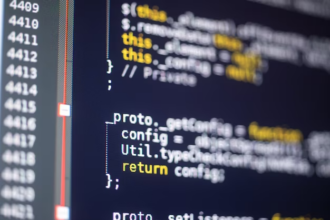
Python Age Calculator: Guide For You
In this tutorial, we’ll dive into creating a simple Python program to calculate a user’s age. Whether you’re a beginner just starting to learn Python or someone looking to embark on their first small project, this tutorial is designed for you. We’ll harness the power of Python’s built-in datetime module to accomplish this task, so there’s no need to install any additional dependencies.
Building the Age Calculator in Python
Let’s begin by importing the necessary module:
| # Import the required dependencyfrom datetime import date |
Next, we’ll prompt the user to input their birthday and create a datetime object with that information:
| # Ask the user to input year, month, and day of their birthday# and output a datetime object of their birthdaydef get_user_birthday(): birth_year = int(input(‘Please enter your birth year: ‘)) birth_month = int(input(‘Please enter your birth month: ‘)) birth_day = int(input(‘Please enter your birth day: ‘)) # Convert user input into a datetime object user_birthday = date(birth_year, birth_month, birth_day) return user_birthday |
Now, we can proceed to calculate the user’s age:
| # Define a function to calculate the user’s agedef calculate_age(user_birthday): # Get the current date today = date.today() # Calculate the years difference year_diff = today.year – user_birthday.year # Check if the birth month and birth day precede the current month and current day precedes_flag = ((today.month, today.day) < (user_birthday.month, user_birthday.day)) # Calculate the user’s age age = year_diff – precedes_flag # Return the age value return age |
Finally, we can execute the code:
| if __name__ == “__main__”: user_birthday = get_user_birthday() current_age = calculate_age(user_birthday) print(f”Your age is: {current_age}”) |
Testing the code with a sample birthday:
| Please enter your birth year: 1999Please enter your birth month: 02Please enter your birth day: 01 |
You should get:
| Your age is: 23 |
Complete Code
Here’s the complete code for your reference:
| # Import the required dependencyfrom datetime import date # Ask the user to input year, month, and day of their birthday# and output a datetime object of their birthdaydef get_user_birthday(): birth_year = int(input(‘Please enter your birth year: ‘)) birth_month = int(input(‘Please enter your birth month: ‘)) birth_day = int(input(‘Please enter your birth day: ‘)) # Convert user input into a datetime object user_birthday = date(birth_year, birth_month, birth_day) return user_birthday # Define a function to calculate the user’s agedef calculate_age(user_birthday): # Get the current date today = date.today() # Calculate the years difference year_diff = today.year – user_birthday.year # Check if the birth month and birth day precede the current month and current day precedes_flag = ((today.month, today.day) < (user_birthday.month, user_birthday.day)) # Calculate the user’s age age = year_diff – precedes_flag # Return the age value return age if __name__ == “__main__”: user_birthday = get_user_birthday() current_age = calculate_age(user_birthday) print(f”Your age is: {current_age}”) |
More Precise Method
The more precise method calculates the age considering the birth year, month, and day, making it more accurate.
Now, let’s implement both methods and see the differences.
| Method | Calculation | Precision |
|---|---|---|
| Simple Method | Current Year – Birth Year | Less Precise |
| Precise Method | Current Date – Birth Date | More Precise |
Video Explanation
In order to explain this topic in more detail, we have prepared a special video for you. Enjoy watching it!
Conclusion
In this tutorial, we explored two methods for calculating your age using Python. You can choose between a simple method for a quick result or a more precise method for accuracy. Feel free to leave comments below if you have any questions or suggestions for improvements. Happy coding!


Average Rating